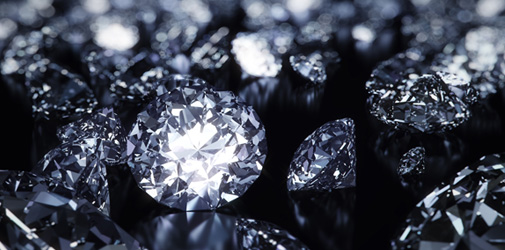
The 4C's of Diamonds
Carat weight
Carat refers to a diamond's weight rather than its size, and one carat is equal to 0.20 grams, subdivided into 100 points. Given that, the larger the diamond the more rare it is, a heavier diamond with comparative cut, clarity and color qualities to a smaller diamond will be significantly higher in value. This tool of measurement owes its name to carob seeds, which were once used to measure the weight of diamonds and other small items of value.
Learn more about Diamond Carat Weight
Cut
The way and quality with which a diamond is cut affects how it reflects light and its overall brilliance. A diamond that isn't cut well will make poor use of its light performance abilities, unevenly dispersing light and reducing its sparkle. Proportion, symmetry, finish and polish all play a part in how a diamond cut is appraised by experts.
Learn more about Diamond Cut
Clarity
A diamond's clarity measures the amount, location and severity of impurities found inside the diamond as well as on its surface. Every imperfection found will reduce the diamond's overall clarity. The clearer the diamond, the more valuable it will be, dependent on other factors, such as its carat weight, cut and colour.
Learn more about Diamond Clarity
Color
Diamonds of the most popular color – white – range from totally colourless to a very pale yellow. White diamonds that appear slightly yellowish are not easily confused with fancy yellow diamonds, which are unmistakeably bright yellow in colour. The white diamonds that achieve the highest color rating are actually those with the least amount of colour. Fancy-coloured diamonds are more rare than white diamonds and are generally more expensive; however, their overall value is dependent on their carat weight, cut and clarity. Fancy-coloured diamonds can be blue, red, pink, green, orange, yellow, brown and black – or even multi-coloured in some cases.
Learn more about Diamond Color













